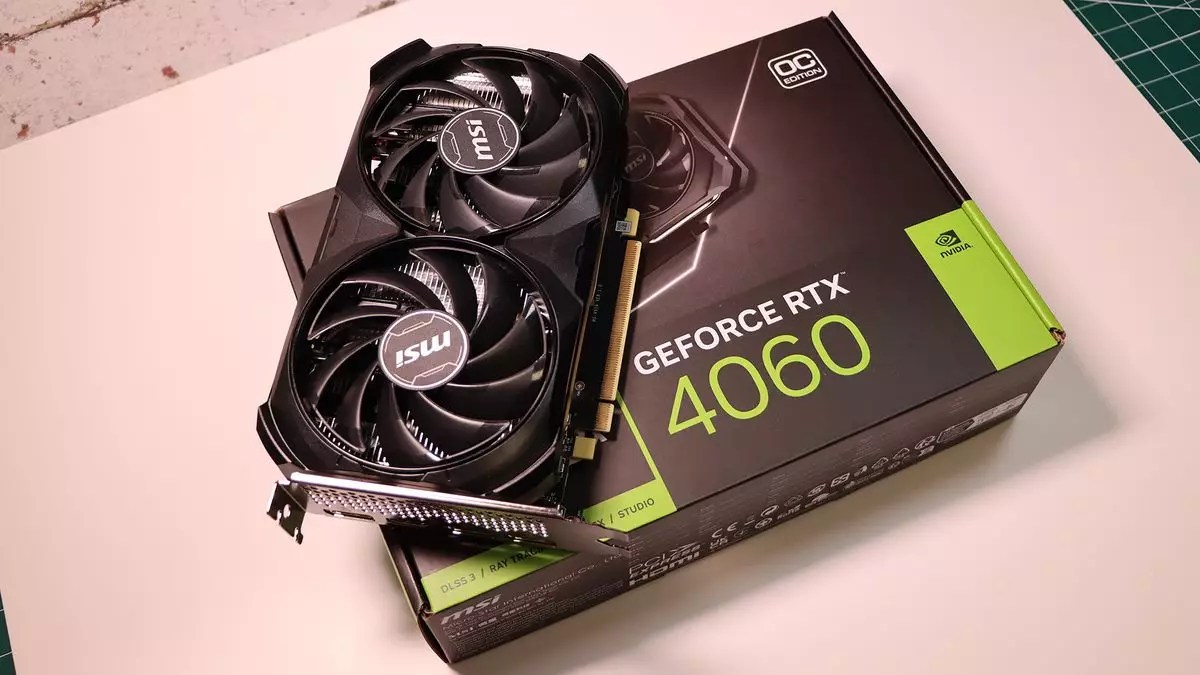The realm of gaming technology is notably dynamic, characterized by rapid advancements and cyclic market trends, particularly concerning graphics processing units (GPUs). Recent results from the Steam hardware survey indicate a significant uptick in the adoption of Nvidia’s 40-series graphics cards, particularly the NVIDIA GeForce RTX 4060 and RTX 4060 Ti. This surge can largely be attributed to a series of recent price reductions that have made these GPUs more accessible to gamers, especially as the community anticipates the arrival of next-gen cards.
Understanding the Rise of the RTX 4060 Series
In the latest Steam hardware survey, the RTX 4060 experienced a 1.17% increase in user adoption, while the RTX 4060 Ti saw a 0.76% rise. While these numbers might not leap off the page, when examined through a broader lens, the implications become clearer. The RTX 4060, which now commands a 4.58% share of the surveyed GPU market, reflects a 34% increase from its previous standing of 3.41%. This scenario underscores the appeal of the current-generation RTX 4060 GPU, especially in the mid-range segment where gamers often seek the sweet spot between performance and price.
Moreover, when including the mobile variant of the RTX 4060—utilizing the same architecture—the overall market share for this segment surpasses that of any other GPU in the dataset. This suggests a robust demand for the Ada Lovelace architecture, emphasizing that consumers are gravitating towards options that deliver decent performance without the astronomical price tags often associated with high-end graphics cards.
A crucial aspect to consider is that these statistics emerge from a segment of the population that is already engaged with Steam and has taken the time to participate in the hardware survey. This naturally skews the results, as it primarily represents a subset of global gaming demographics. Another factor likely influencing these trends is the growing presence of the Chinese gaming market. The survey reports a 1.54% increase in users utilizing Simplified Chinese, likely correlated with the launch of high-profile titles such as “Black Myth: Wukong” that can drive GPU upgrades.
In Western markets, the anticipation of Nvidia’s impending RTX 50-series and AMD’s RX 8000-series cards further complicates the landscape. Gamers are faced with a choice: invest in a current mid-range GPU like the RTX 4060, which is becoming increasingly affordable, or hold off in hopes of landing a next-gen card. This decision is compounded by the long-standing issue of inflated GPU prices, which have only recently begun to normalize. As seen in various markets, especially the UK, aggressive pricing strategies have made the RTX 40-series markedly more appealing.
The approach of new technology often stimulates a shift in consumer behavior; familiarity and anticipation breed opportunities for budget-conscious gaming enthusiasts. Individuals who might have been deterred by exorbitant prices can now seize the chance to pick up GPUs like the RTX 4060 at more digestible price points. Availability and price drops below the key threshold of $300 may further entice gamers who had previously been locked out of the market or unwilling to pay premium prices for hardware.
The broader findings of the Steam hardware survey paint a somewhat mundane picture in other areas. Interestingly, we see noteworthy fluctuations among Windows operating systems; usage of Windows 10 has risen by 1.57%, while Windows 11 has dipped by 1.48%, resulting in Windows 10 reclaiming its position in the Steam landscape. This trend signals varying user preferences and possibly hesitations surrounding the transition to newer software offerings.
Looking Towards the Future
As the industry prepares for the next wave of graphics cards, the forthcoming months will be pivotal for hardware adoption. The potential for significant changes—especially if AMD adopts a competitive pricing strategy for its RX 8000 series—remains tantalizing. While expectations around immediate uptake of new GPUs should be tempered, the growing accessibility of mid-range cards could serve as a springboard for gamers to embrace upgraded technology.
The current Steam hardware survey outlines shifting preferences and market behaviors, intricately tied to the anticipation of next-generation GPUs. As price points stabilize, mid-range cards begin to flourish, offering a glimpse into the evolving landscape of PC gaming hardware. With time, these trends will likely evolve alongside consumer needs, technology developments, and competitive strategies. The horizon looks promising for both consumers and manufacturers alike, heralding an exciting phase in gaming technology.


Leave a Reply